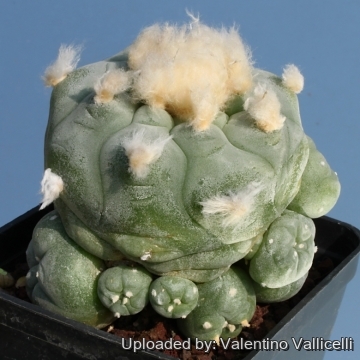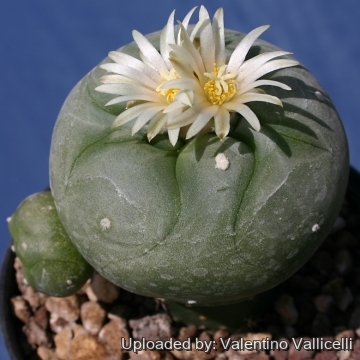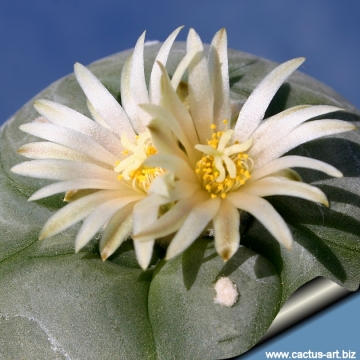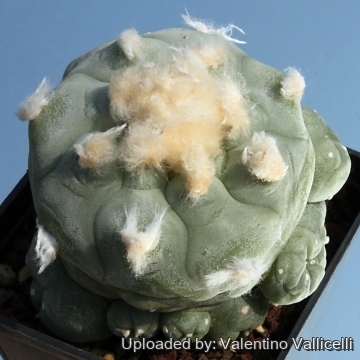Donate now to support the LLIFLE projects.
Your support is critical to our success.
Your support is critical to our success.
Lophophora diffusa subs. kubesae
Acta Mus. Richnov., Sect. Nat. 9(1): 66 (-67; fig. 77). 2002 ("kubesai")
Family: CACTACEAE
Acta Mus. Richnov., Sect. Nat. 9(1): 66 (-67; fig. 77). 2002 ("kubesai")
Family: CACTACEAE
Accepted Scientific Name: Lophophora diffusa (Croizat) Bravo
Cact. Suc. Mex. 12: 13. 1967

Lophophora diffusa subs. kubesae Photo by: Prof. Ilham Alakbarov
Synonyms:
- Lophophora diffusa subs. kubesae Halda, Kupčák & Malina
- Lophophora diffusa subsp. kubesai Halda, Kupčák & Malina
See all synonyms of Lophophora diffusa
back
Accepted name in llifle Database:Lophophora diffusa (Croizat) Bravo
Cact. Suc. Mex. 12: 13. 1967
Synonymy: 18
- Lophophora diffusa (Croizat) Bravo
- Lophophora echinata var. diffusa Croizat
- Lophophora williamsii subs. diffusa (Croizat) Scheinvar
- Lophophora williamsii var. diffusa (Croizat) G.D.Rowley
- Peyotl diffusus (Croizat) Sotom., Arred. & Mart.Mend.
- Lophophora diffusa var. koehresii Říha
- Lophophora koehresii (Říha) Bohata, Myšák & Šnicer
- Lophophora viridescens (Halda) Halda
- Lophophora williamsii var. koehresii (Říha) Grym
- Lophophora diffusa subs. kubesae Halda, Kupčák & Malina
- Lophophora diffusa subsp. kubesai Halda, Kupčák & Malina
- Lophophora diffusa var. swobodaiana Halda, Kupčák & Malina
- Lophophora diffusa subs. viridescens Halda
- Peyotl viridescens (Halda) Sotom., Arred. & Mart.Mend.
- Lophophora lutea (Rouhier) Backeb.
- Lophophora echinata var. lutea (Rouhier) Croizat
- Lophophora williamsii var. lutea (Rouhier) Soulaire
- Lophophora williamsii var. luteus Rouhier
back

- JJH 0010892 Punte Mezquitio , Queretaro, Mexico. This plant is prone to offsetting (in contrast to the typical solitary stemmed L. diffusa specimens) eventually forming multi-headed heaps up to 1,5 mt in diameter. Photo by: Valentino Vallicelli

Lophophora diffusa subs. kubesae Photo by: Valentino Vallicelli

Lophophora diffusa subs. kubesae Photo by: Cactus Art

Lophophora diffusa subs. kubesae Photo by: Valentino Vallicelli
| Your Actions | |
|---|---|
| Back to Lophophora index | |
| Back to Cactaceae index | |
 |
Back to Cacti Encyclopedia index |








